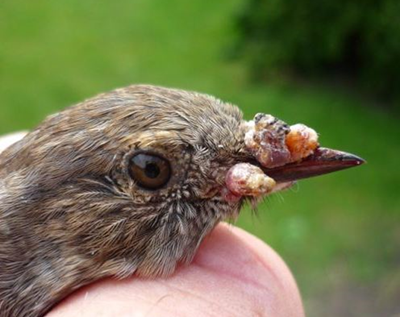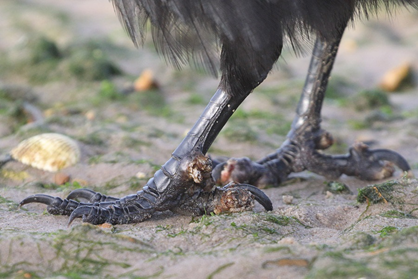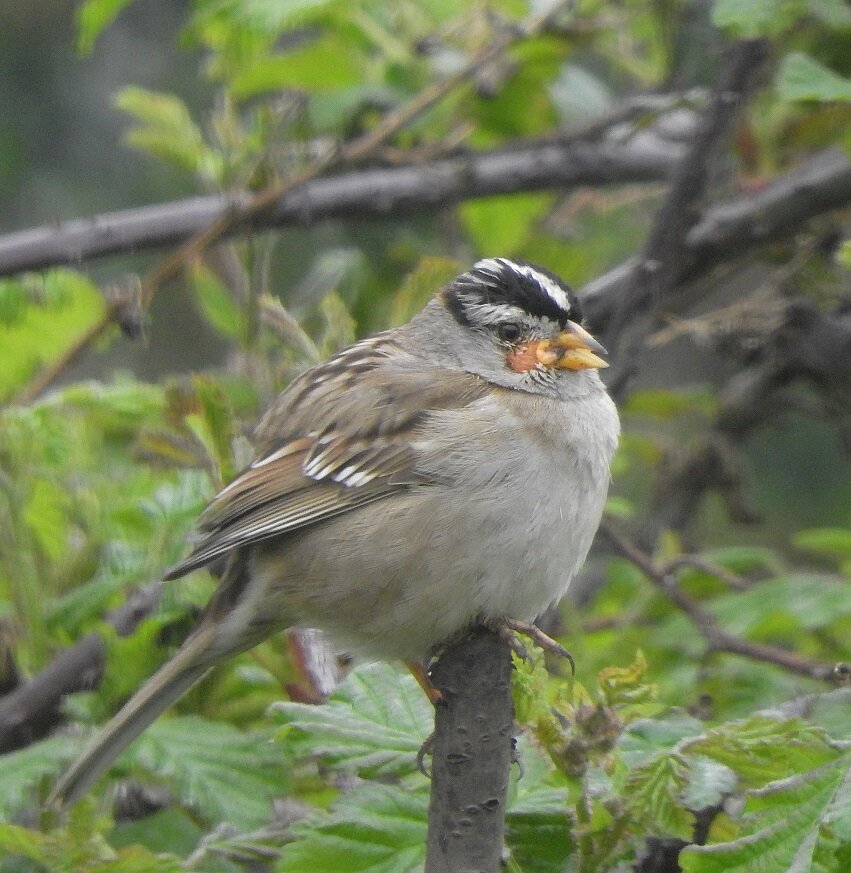Written by: Victoria Heijn, PHSS Intern
Avian pox is a viral disease that is believed to affect most bird species, with cases of pox reported in approximately 230 wild and domestic species. The disease can be highly contagious and may take time to show symptoms after a patient is infected, so it can pose a challenge to wildlife rehabilitators whenever an outbreak occurs in their facilities. Consequently, the clinic staff at PHSS takes precautions and exercises diligence in examining patients, tracking changes in health, and minimizing the spread if a case does arise. With over 100 patients currently receiving care at PHSS (many of them baby birds), it is important to understand how the pox virus spreads, its clinical presentations, and the measures that can be taken to mitigate the impact of the disease.
Transmission mainly occurs when viral particles enter the body through an opening in the skin. In the wild, it is most commonly spread through the bites of insects such as mosquitoes, flies, mites, fleas, etc. The virus may also be contracted through contact with an infected animal or a contaminated surface such as bird feeders and birdbaths. In a wildlife rehabilitation center, this may include branches or perches, nests, food and water bowls, and toys. The virus may also be transmitted through aerosolized particles.
The most common clinical presentation seen is known as the dry or cutaneous form, and it consists of the appearance of wart-like lesions on featherless areas of the body, including around the beak, eyelids, legs, and feet. In this form, pox develops slowly after birds become infected, and lesions usually persist for one to four weeks. Birds usually recover from this, and their lesions may heal with some scarring. However, in some cases, the lesions may cause permanent damage such as blindness, malformations of the beak, or loss of digits and feet, depending on the affected area. There is also a risk of mortality due to secondary bacterial infections, and young birds are more susceptible to having lasting defects than adults. In wet pox, or the diphtheritic form, mucus membranes may be affected, and the disease may spread to the respiratory tract. In the least common septicemic form (usually seen in canaries), the virus can lead to depression, anorexia, and death.
Although there is no definitive cure for pox, supportive care is usually given. This may include topical care of the lesions, usually with an iodine solution. Antibacterial treatment may also be incorporated to fight off bacterial infections. Patients’ diets may be supplemented with vitamins and fluids to promote the healing of their lesions and boost their immune systems. Once patients show signs of pox, they are isolated, and other susceptible patients are closely monitored for similar signs. In addition to placing patients on pox watch, sanitation of any bedding, perches, bowls, toys, and other items shared among patients is vital in preventing the spread of the virus. Sanitation methods include scrubbing with soap, soaking in a disinfecting solution, and decontaminating with a diluted bleach solution. By keeping a close watch on patients and maintaining high standards of sanitation at the clinic, PHSS staff work to support patients that are infected, minimize the spread to others, and prepare patients to be released back into their natural habitats.






